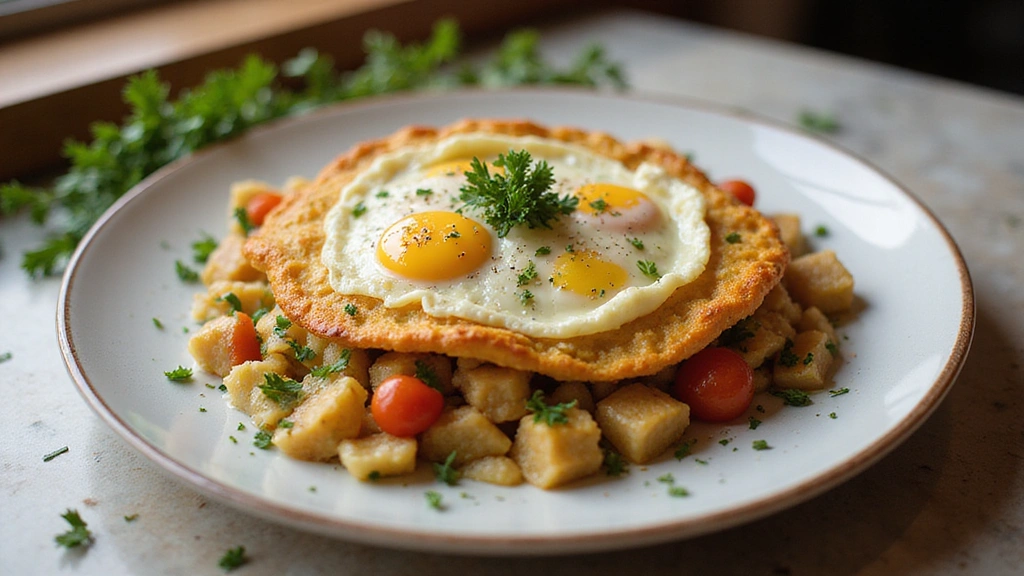Starting your day with a nourishing breakfast is essential, especially for those on a bariatric journey.
These Bariatric Soft Food Breakfast Recipes are not only easy to prepare but also gentle on the stomach, making them ideal for anyone recovering from surgery or looking for lighter meal options.
The combination of creamy textures and subtle flavors ensures that each bite is both satisfying and comforting.
Whether you’re enjoying a quiet morning at home or need something quick to fuel your day, these recipes will provide the nourishment you need without overwhelming your palate.
The History and Cultural Significance
• Bariatric Soft Food Breakfast Recipes Easy & Gentle traces its origins to modern dietary practices, evolving as a response to the needs of individuals undergoing weight loss surgery.
• The dish evolved over decades as nutritionists refined the concept of soft foods, emphasizing flavor without compromising health, eventually becoming the beloved versions we know today.
• In many cultures, soft foods are traditionally served during recovery periods, symbolizing care and nourishment.
• While many variations exist across different dietary needs, the authentic versions maintain a focus on smooth textures and balanced nutrition that sets them apart from standard breakfast fare.
Recipe Overview
Nutritional Information (per serving)
Ingredients
Essential Equipment Guide
Blender: A high-quality blender is essential for creating smooth and creamy textures in your soft food recipes. Look for one with multiple speed settings and a powerful motor for best results. A hand blender can also work for smaller batches, but may not achieve the same level of creaminess.
Non-stick Skillet: This type of skillet helps prevent food from sticking, making it easier to cook delicate items like scrambled eggs or pancakes. A well-seasoned cast-iron skillet can also be a great alternative, providing even heat distribution.
Measuring Cups and Spoons: Accurate measurements are crucial in cooking, especially when working with soft food recipes where precise ingredient ratios can affect the final texture and flavor. Look for clear, easy-to-read markings for convenience.
Preparation Methods
Cooking Oatmeal: Start by bringing water or milk to a boil before adding the oats. This method helps to ensure the oats cook evenly and absorb the liquid fully, resulting in a creamy texture. Stir occasionally to prevent sticking and cook until soft.
Mashing Fruits: Use a fork or a potato masher to break down bananas and other soft fruits. This technique ensures that no chunks remain, providing a smoother texture that is easier to digest. Aim for a homogeneous consistency.
Incorporating Flavors: When adding spices or sweeteners, do so gradually and taste as you go. This allows you to control the flavor intensity and avoid overpowering the gentle palate. Mix thoroughly to ensure even distribution.
Step 1: Prepare Ingredients
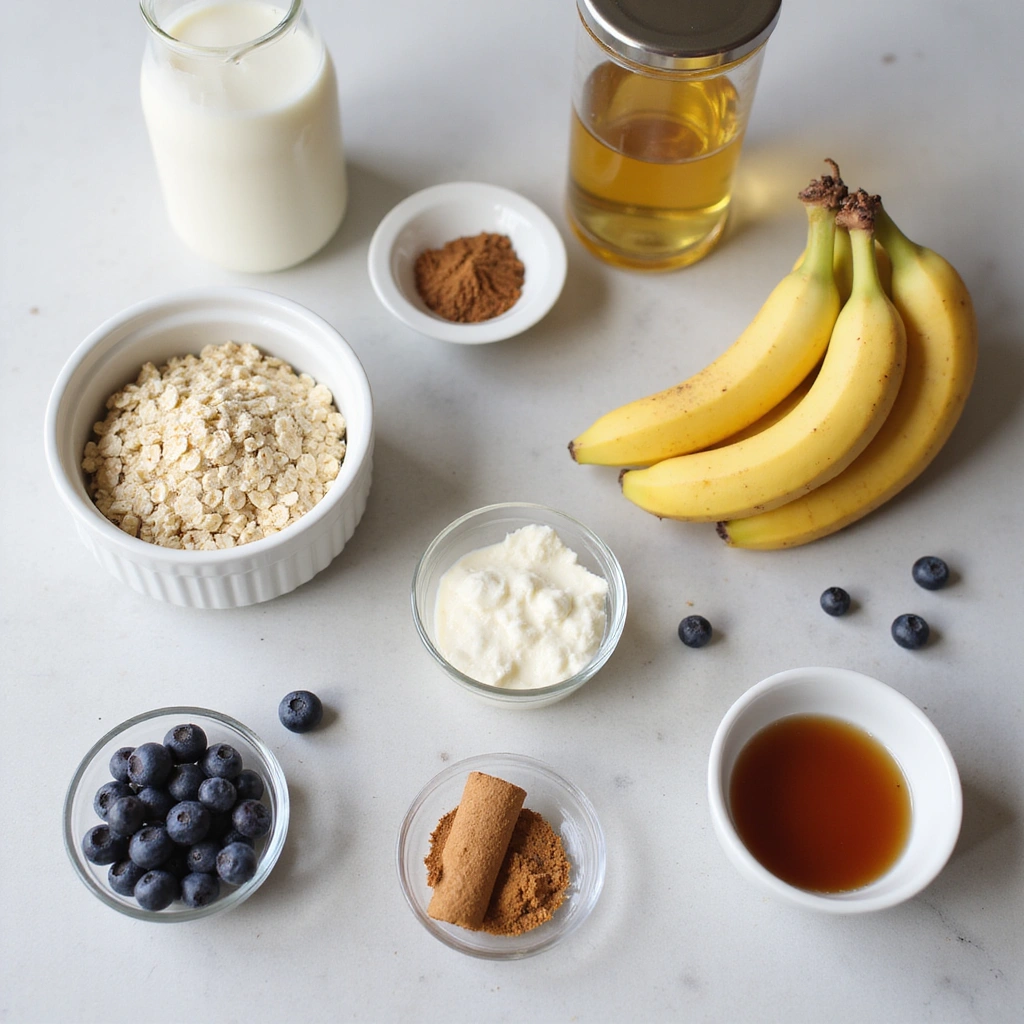
Gather all your ingredients on a clean workspace.
Ensure you have your oatmeal, milk, fruits, and seasonings ready to use.
This organization helps streamline the cooking process and reduces the chance of forgetting an ingredient.
Having everything prepped beforehand leads to a smooth cooking experience.
Step 2: Cook Oatmeal
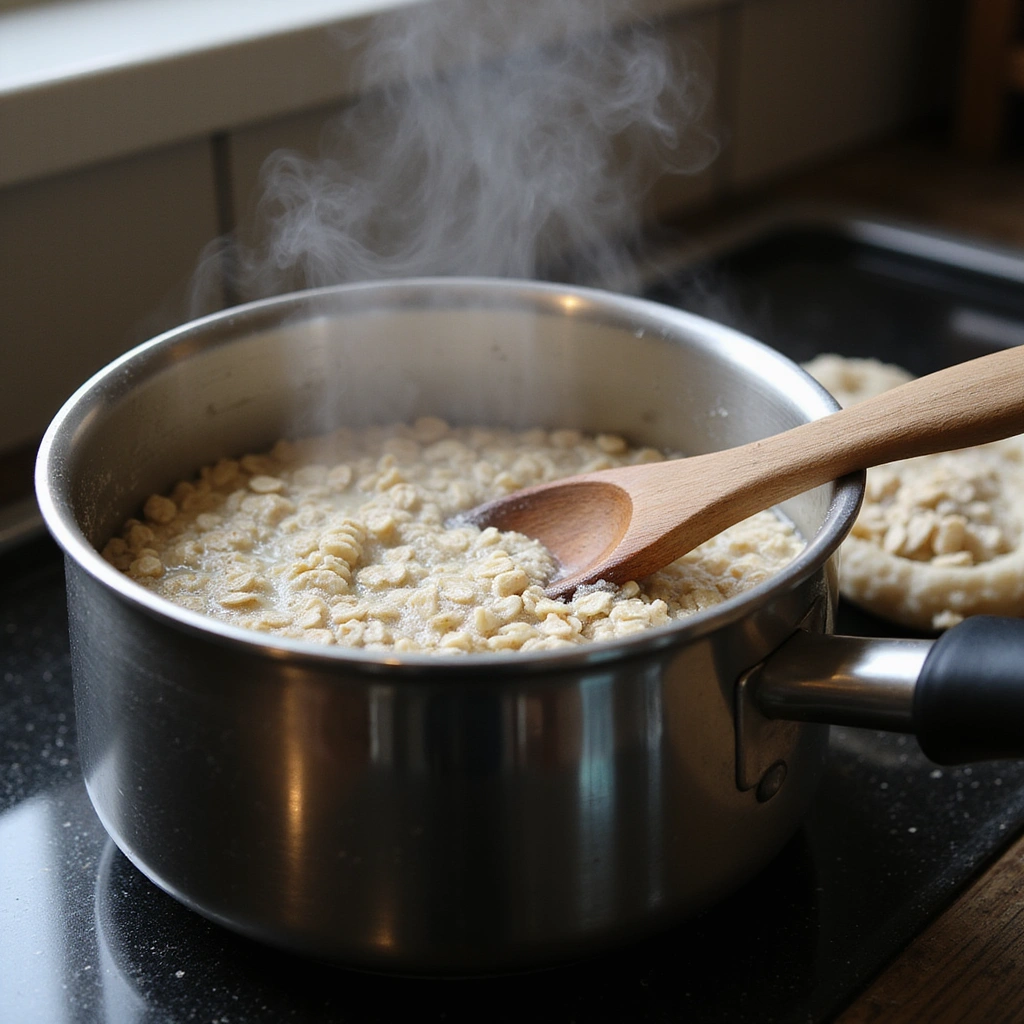
In a medium saucepan, bring 2 cups of water or milk to a boil.
Once boiling, add the oatmeal and reduce the heat to low.
Stir occasionally and cook for about 5-7 minutes until the oats have absorbed most of the liquid and are creamy.
Make sure to adjust the consistency by adding more liquid if it appears too thick.
Step 3: Mash the Banana
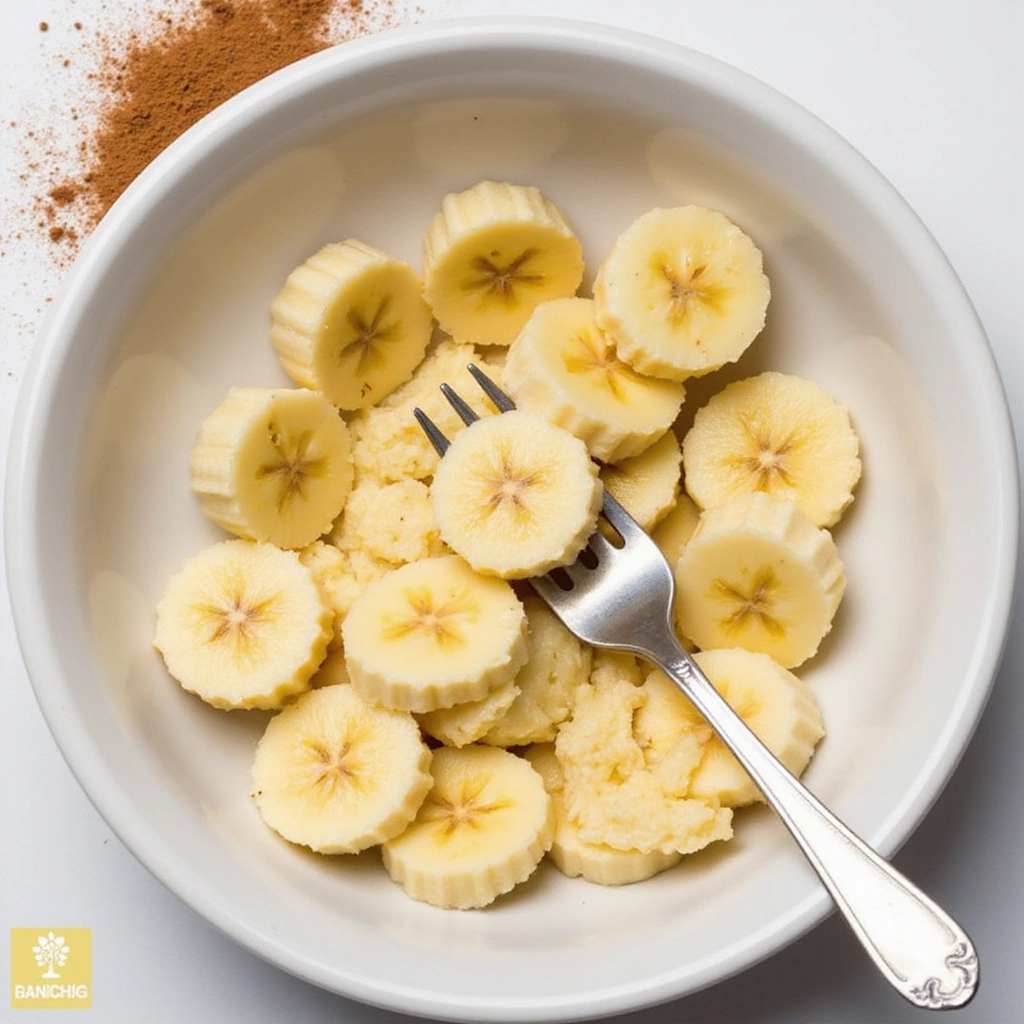
While the oatmeal is cooking, take a ripe banana and place it in a bowl.
Using a fork, mash the banana until smooth, with no lumps remaining.
This process enhances the sweetness and makes it easier to mix into the oatmeal later.
Feel free to add a bit of cinnamon to the banana while mashing for extra flavor.
Step 4: Combine Oatmeal and Banana
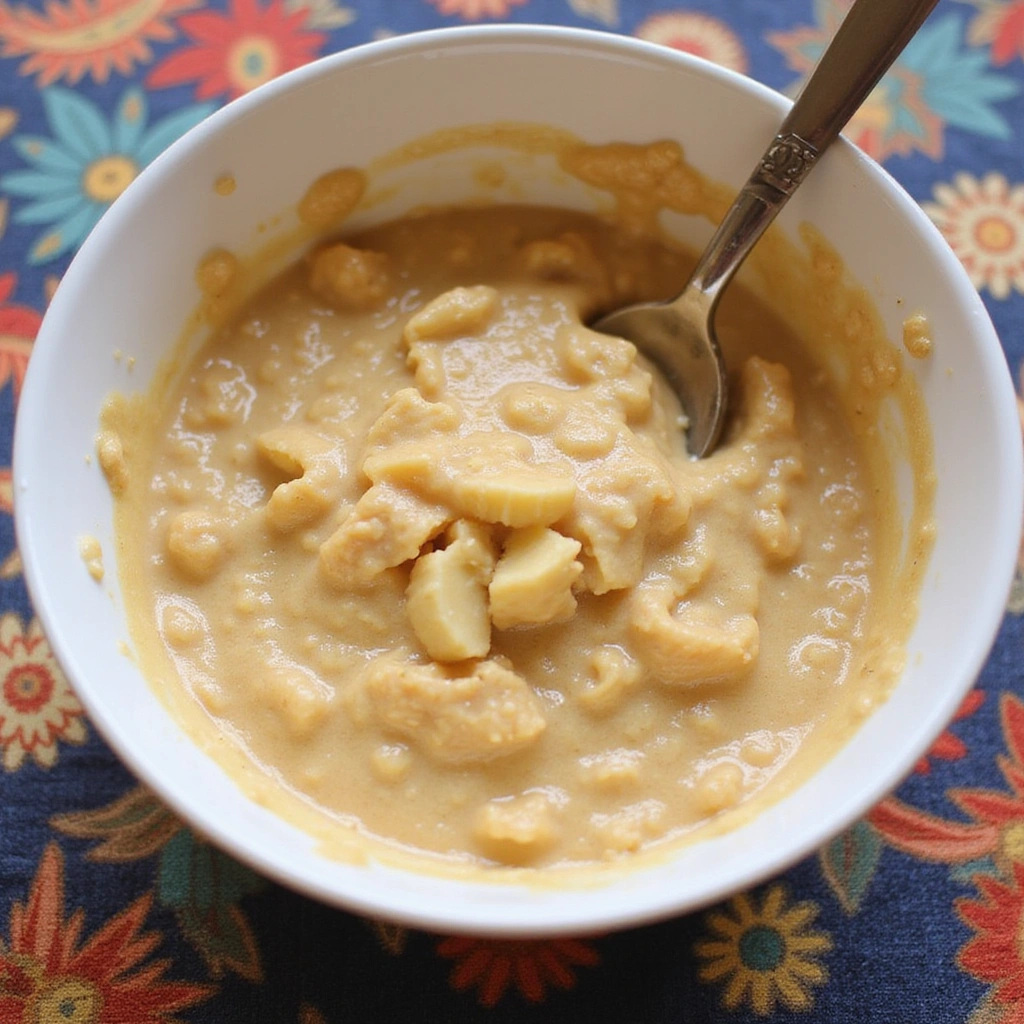
Once the oatmeal is ready, remove it from heat and allow it to cool slightly.
Stir in the mashed banana until fully combined, ensuring an even distribution.
This step adds natural sweetness and creaminess to the oatmeal.
Taste and adjust sweetness if necessary.
Step 5: Add Blueberries
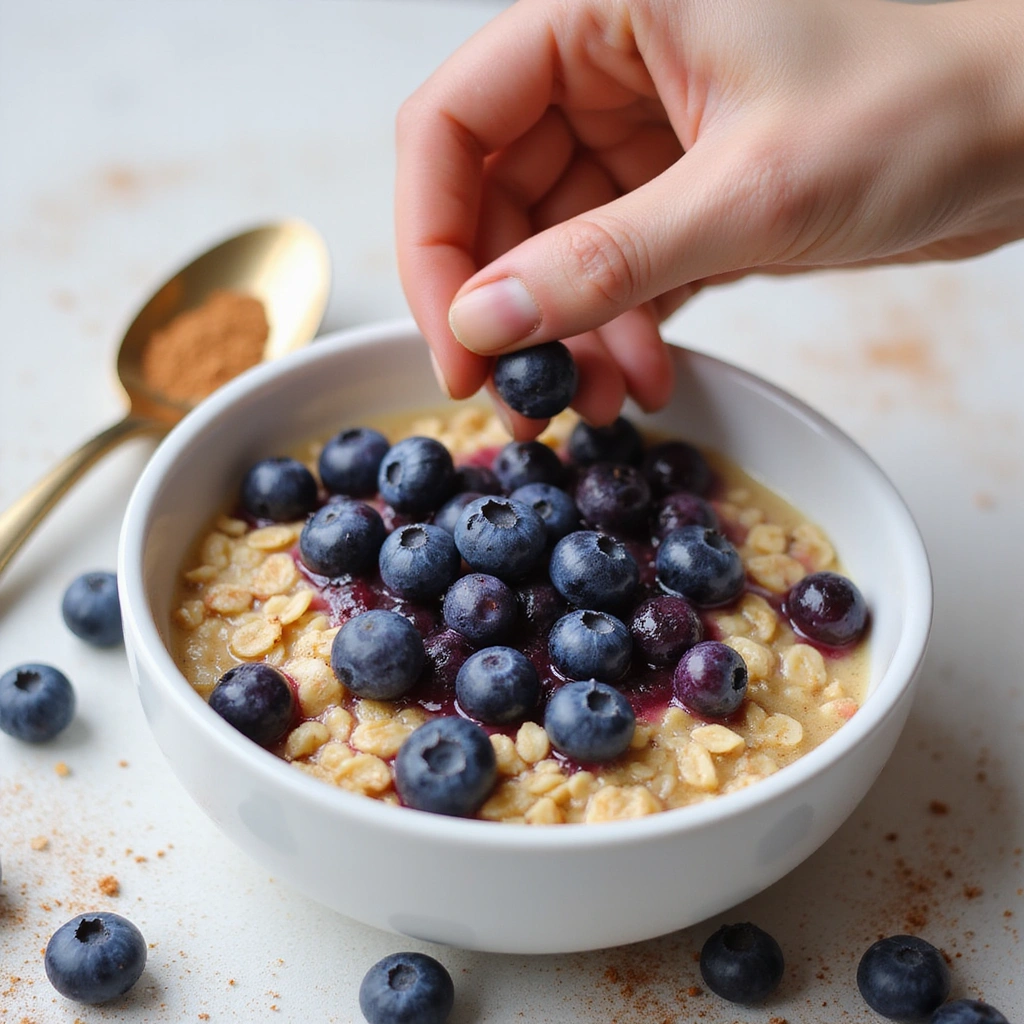
Fold in the blueberries gently into the oatmeal mixture.
If using frozen blueberries, let them thaw slightly before adding to prevent the oatmeal from cooling too much.
This adds both flavor and a pop of color to your dish.
Make sure not to overmix to keep the blueberries intact.
Step 6: Serve the Oatmeal
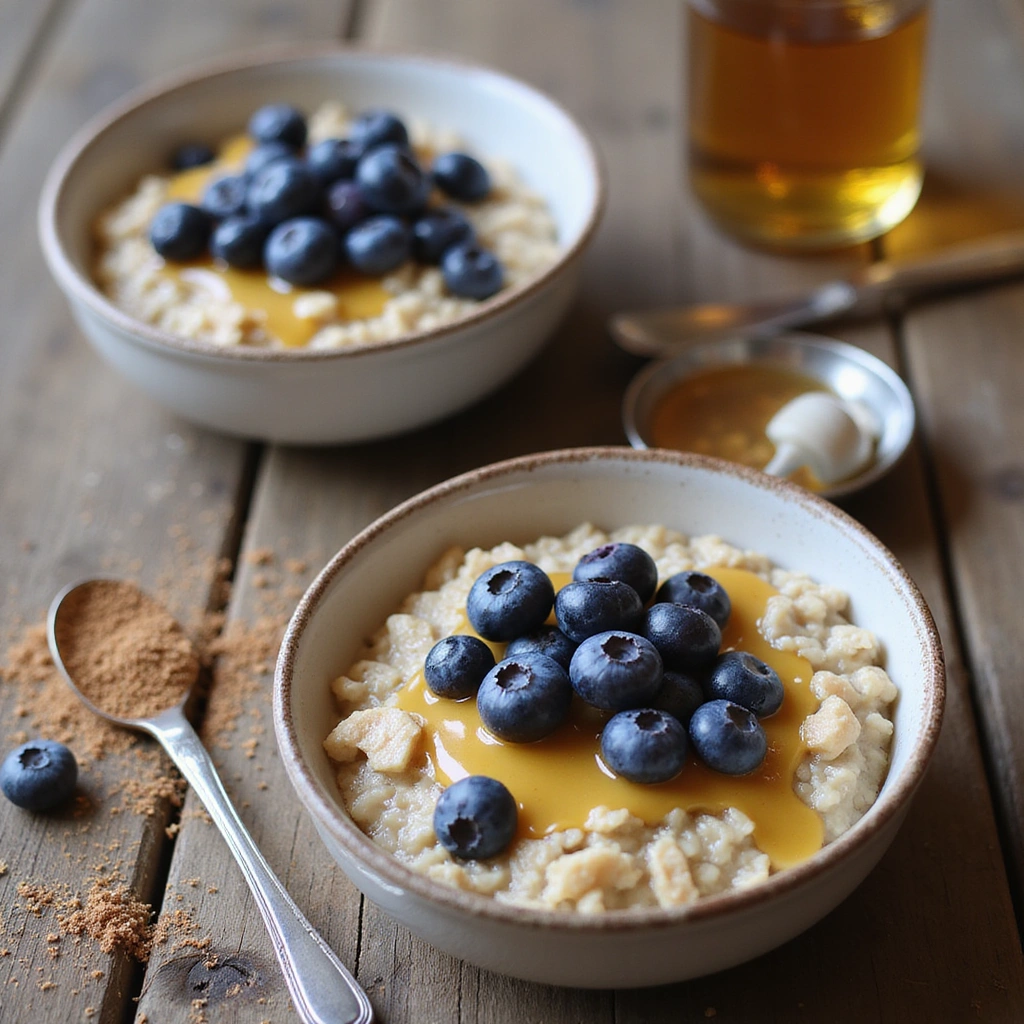
Spoon the oatmeal mixture into serving bowls.
Drizzle a little honey on top if desired for added sweetness.
Garnish with a sprinkle of cinnamon or additional blueberries for a pleasing presentation.
Serve warm for the best texture and flavor.
Step 7: Enjoy Your Breakfast
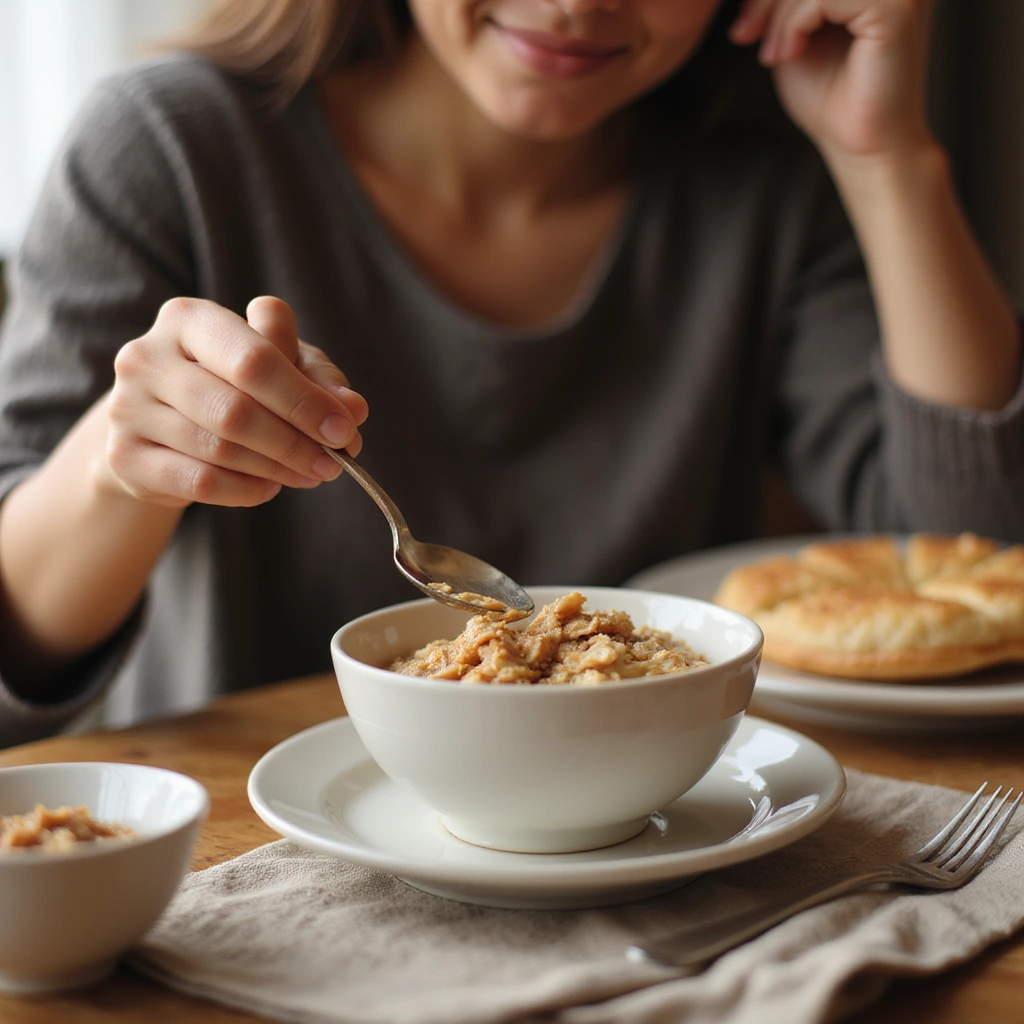
Take a moment to appreciate the colorful presentation before diving in.
Savor each bite, enjoying the smooth textures and delightful flavors.
This breakfast is not only nourishing but also comforting and satisfying.
Feel free to experiment with additional toppings based on your taste preferences.
Critical Timing and Temperature Guide
Cooking Oatmeal: Cook oatmeal for about 5-7 minutes at medium heat until it reaches a creamy texture. Look for a consistency that holds some shape but is not too thick. Common mistakes include overcooking, which can lead to a gummy texture.
Serving Temperature: Serve the oatmeal warm for the best flavor and texture. Cool oatmeal can lose its appeal; avoid letting it sit too long before serving.
Banana Ripeness: Use ripe bananas for optimal sweetness and creaminess. If they are too green, they won’t mash smoothly and may affect the flavor.
Pro Tips for Bariatric Soft Food Breakfast Recipes Easy & Gentle
• Ingredient Selection: Choose ripe fruits for the best flavor and texture, particularly bananas, which add natural sweetness without the need for added sugars.
• Preparation Secret: Let the oatmeal cool slightly before adding fruits to prevent them from breaking down too much, preserving their texture.
• Temperature Management: Serve oatmeal warm, as cold oatmeal loses its comforting appeal and can become unappetizing.
• Texture Enhancement: Blend the oatmeal for a smoother consistency if preferred, particularly for those who need very soft foods.
• Flavor Layering: Experiment with different spices, such as nutmeg or ginger, to create depth in flavor without adding calories.
• Make-Ahead Strategies: Prepare oatmeal in bulk and store in the fridge for up to three days, reheating individual portions as needed.
• Restaurant-Quality Finishing Touches: A sprinkle of chia seeds or a dollop of yogurt on top can elevate the dish visually and nutritionally.
• Equipment Optimization: Use a non-stick pan to prevent sticking, which is especially helpful for delicate dishes like scrambled eggs.
Troubleshooting Common Issues
• Oatmeal Too Thick: This can happen if too little liquid is used. If you find your oatmeal too thick, add a splash of milk or water to loosen it up while cooking. Stir continuously to achieve the desired consistency.
• Banana Not Sweet Enough: If the banana isn’t ripe enough, it won’t provide the necessary sweetness. Always choose overripe bananas for mashing, or add a touch of honey or maple syrup.
• Texture Gummy: Overcooking oatmeal can lead to a gummy texture. Keep an eye on the cooking time and adjust the heat if necessary.
• Flavor Lacking: If the oatmeal tastes bland, try adding a pinch of salt or additional spices to enhance the flavor profile.
• Blueberries Breaking Down: If using frozen blueberries, allow them to thaw slightly before adding to prevent them from turning the oatmeal purple.
• Serving Temperature Off: If oatmeal cools down too much before serving, it can lose its appeal. Reheat gently on low heat and stir in a bit of milk to restore creaminess.
Variations and Regional Differences
• Protein-Packed Variation: Add a scoop of protein powder or Greek yogurt to the oatmeal for an extra boost of protein, making it more filling for those needing more nutrition.
• Spiced Apple Version: Replace bananas with grated apples and add a pinch of nutmeg for a fall-inspired breakfast.
• Savory Oatmeal: For a different twist, cook oatmeal in vegetable broth and top with a poached egg and spinach for a savory breakfast option.
• Modern Interpretations: Incorporate trendy superfoods, like chia seeds or almond butter, for additional nutritional benefits while keeping the recipe soft and gentle.
Food Science Behind the Recipe
• Gelatinization of Starch: Cooking oatmeal allows the starch granules to absorb water and swell, leading to a creamy texture. Understanding this process helps in achieving the perfect consistency.
• Emulsification: Mixing milk or yogurt with oatmeal creates a smooth emulsion that enhances creaminess. Knowing how to properly combine these ingredients can elevate the overall mouthfeel.
• Flavor Development: The Maillard reaction can occur with prolonged cooking of oatmeal, enhancing its nutty flavor. This scientific principle explains why some cooking methods yield better flavors than others.
Frequently Asked Questions
What’s the most common mistake people make when preparing Bariatric Soft Food Breakfast Recipes? Overcooking the oatmeal is a common mistake, leading to a gummy texture. Pay attention to cooking time and check for doneness early.
Can I prepare components of this dish in advance? Yes, oatmeal can be cooked and stored in the refrigerator for up to three days. Simply reheat with a splash of milk for the best texture.
How do I adapt this recipe for dietary restrictions? For gluten-free diets, use certified gluten-free oats. Always check labels for allergens if you have sensitivities.
What’s the best way to store and reheat leftovers? Store in an airtight container in the fridge. Reheat on the stove with a little added liquid to restore creaminess.
Can I freeze this dish? Yes, cooked oatmeal can be frozen for up to three months. Thaw in the refrigerator overnight and reheat gently.
What wine or beverages pair best with this dish? A light herbal tea or a fresh fruit smoothie complements the flavors without overpowering them.
How can I scale this recipe up for a crowd? Simply multiply the ingredients by the number of servings needed, adjusting cooking time as necessary to ensure even cooking.
What side dishes complement this recipe best? A light yogurt parfait with fresh fruits and nuts pairs well, adding texture and flavor variety.
How do professional chefs elevate this dish for restaurant service? Professional chefs might use gourmet toppings like edible flowers or flavored syrups to add visual appeal and sophistication.
Serving and Presentation Guide
• Traditional Presentation: Serve oatmeal in deep bowls, garnished with fresh fruits and a sprinkle of cinnamon. Use a colorful spoon for added visual interest.
• Modern Plating Ideas: Consider layering oatmeal in a clear glass with yogurt and fruits for a visually stunning dessert-like presentation.
• Accompaniment Suggestions: Pair with a side of soft scrambled eggs or a smoothie for a well-rounded breakfast.
• Special Occasion Presentation: Use elegant bowls and add a sprig of mint or a dusting of powdered sugar for a touch of elegance during celebrations.
Conclusion
Bariatric Soft Food Breakfast Recipes are an excellent way to start your day on the right note.
I encourage you to try these recipes and adjust them to fit your tastes.
With a few simple ingredients and techniques, you can create nourishing meals that delight the palate and support your health journey.

